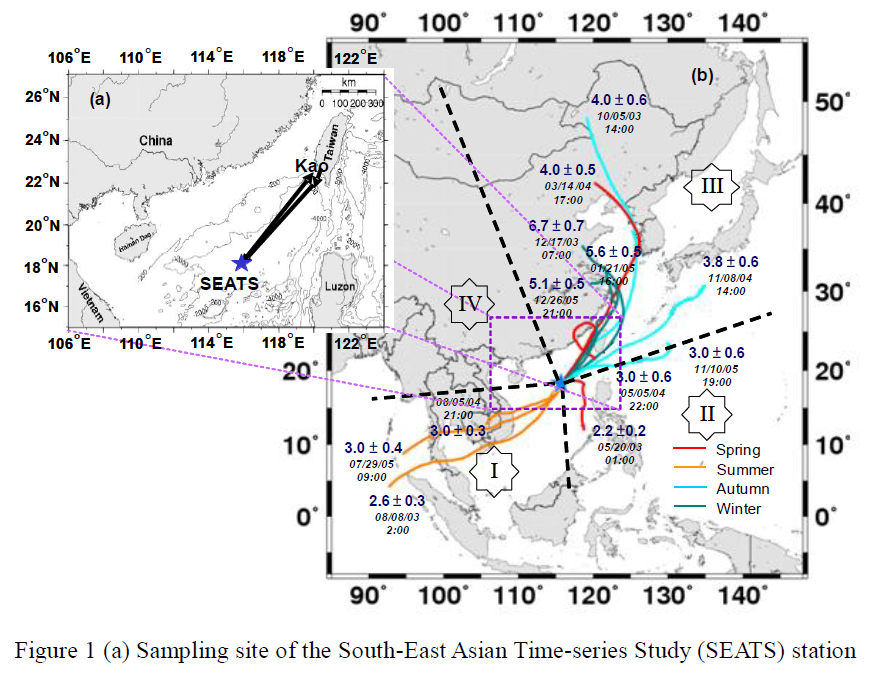曾鈞懋老師研究焦點
Seasonal Changes in Gaseous Elemental Mercury in Relation to Monsoon Cycling over the Northern South China Sea
Tseng, C. M., Liu, C. S., Lamborg, C., (2012), Atmos. Chem. Phys., 12, 7341-7350, doi:10.5194/acp-12-7341-2012.
www.atmos-chem-phys.net/12/7341/2012/
The distribution of gaseous elemental mercury (GEM) was determined in the surface atmosphere of the northern South China Sea (SCS) during 12 SEATS cruises between May 2003 and Dec. 2005. The sampling and analysis of GEM were performed on board ship by using an on-line mercury analyzer (GEMA). Distinct annual patterns were observed for the GEM with a winter maximum of 5.7±0.2 ng/m3 (n=3) and low in summer (2.8±0.2; n=3), with concentrations elevated 2~3 times global background values. Source tracking through backward trajectory analysis demonstrated air masses during the northeast monsoon in winter came from Eurasia, bringing continental- and industrial-derived GEM to the SCS. In contrast, during summer southwest monsoon and inter-monsoon, air masses were from the Indochina Peninsula and Indian Ocean and west Pacific Ocean. This demonstrates the impact that long-range transport, as controlled by seasonal monsoons, has on the Hg atmospheric distribution and cycling in the SCS.

Figure 1 (a) Sampling site of the South-East Asian Time-series Study (SEATS) station in the northern South China Sea (SCS) with routine cruise tracks (arrow) between the Kaoshiung (kao) and the SEATS station (star); (b) the 3-day backward trajectories started at the middle time of the cruise at the SEATS station with average GEM concentrations and marked four general air-advection groups: (I) Southwest monsoon with prevailing SW wind; (II) Inter-monsoon and others (e.g., typhoon) with ENE-E-S wind sector; (III) Northeast monsoon with prevailing NE wind and (IV) air masses from south China with E-NW wind sector












